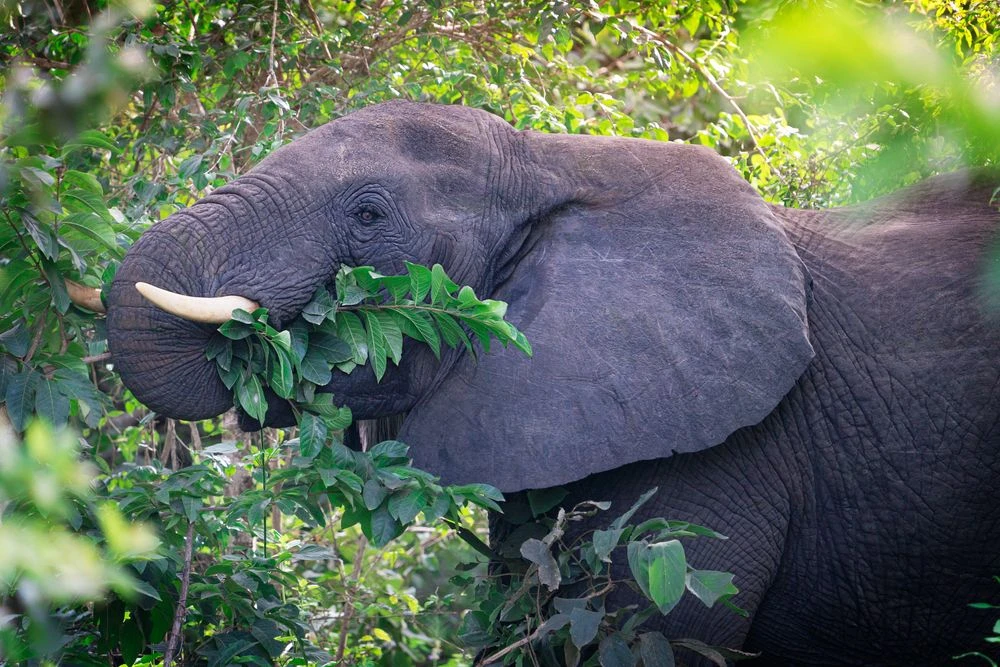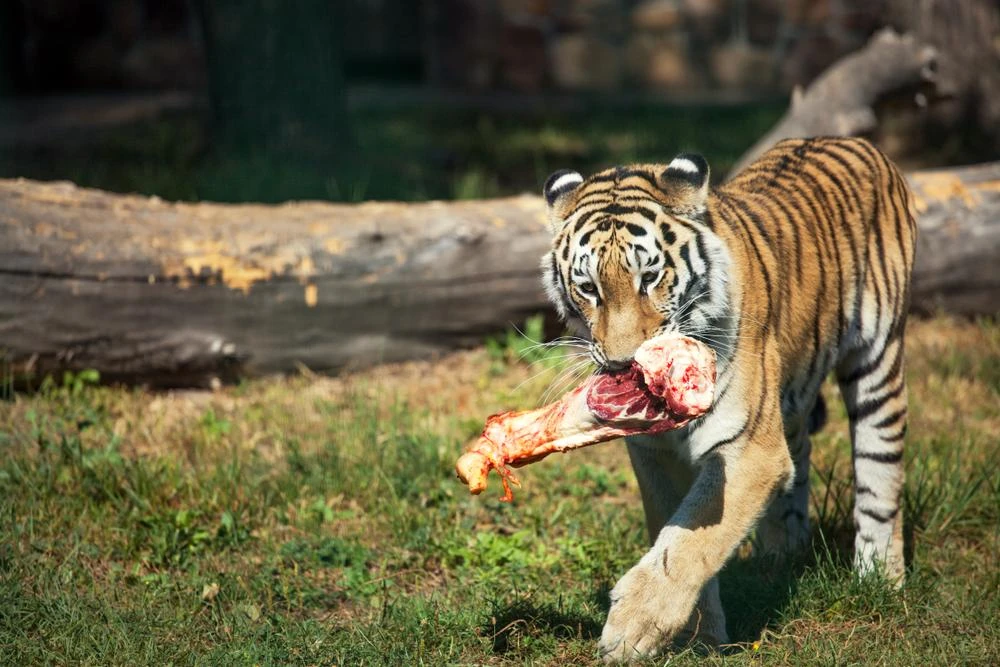Introduction
Herbivores and carnivores are two types of organisms that differ in their dietary habits and adaptations. Herbivores are animals that feed mainly on plants, such as leaves, stems, and roots. Carnivores, on the other hand, are animals that feed mainly on other animals. Together, herbivores and carnivores form a complex and interconnected web of life, with each playing an important role in the balance of ecosystems.
Herbivores
Herbivores feed on plant-based diets and have adaptations in their digestive systems to process tough plant matter and extract nutrients. Some common examples of herbivores are rabbits, cows, horses, elephants, giraffes, deer, and gorillas.
Some common adaptations of Herbivores are:
- Large digestive tract: Herbivores have a large and complex digestive tract that helps to break down tough plant fibers and extract nutrients.
- Mouth structures: Some herbivores have specialized mouth structures, such as flat molars for grinding plant material, or sharp incisors for clipping leaves.
- Fermentation: Many herbivores have a fermentation chamber in their digestive tract where microbes break down tough plant fibers and release nutrients.
- Specialized enzymes: Herbivores produce enzymes, such as cellulase and pectinase, to break down plant cell walls and release the nutrients inside.
- Food storage: Some herbivores have adaptations to store food, such as large cheek pouches, to allow them to gather and process large quantities of plant matter at once.
Types of Herbivores
Herbivores can be classified based on the type of plants they consume and the adaptations they have developed to obtain nutrients from those plants. Some common classifications are:
- Grazers: Herbivores that feed mainly on grasses and other low-lying plants, such as cows, horses, and sheep.
- Browse Herbivores that feed on leaves, twigs, and branches of woody plants, such as deer and rabbits.
- Folivores: Herbivores that feed mainly on leaves, such as elephants and some species of monkeys.
- Frugivores: Herbivores that feed mainly on fruits, such as bears and some species of monkeys.
- Nectarivores: Herbivores feed mainly on nectar from flowers, such as hummingbirds and bats.
- Granivores: Herbivores that feed mainly on seeds, such as squirrels and some species of birds.

Carnivores
Carnivores are animals that feed mainly on other animals, including both vertebrates and invertebrates. They are characterized by their sharp teeth and strong jaws, which are adaptations for hunting and killing prey. Some common examples of carnivores include lions, tigers, wolves, foxes, and hawks. Carnivores play an important role in maintaining the balance of ecosystems by controlling the populations of their prey species.
They have adaptations in their anatomy and behavior that allow them to hunt and feed on other animals effectively.
Some common adaptations are:
- Sharp teeth and strong jaws: Carnivores have sharp teeth and strong jaws that are adapted for cutting, tearing, and chewing meat.
- Keen senses: Carnivores have highly developed senses, such as vision, hearing, and smell, which they use to locate and track prey.
- Speed and agility: Many carnivores are fast runners or able to make sudden, powerful movements, which are adaptations for chasing and capturing prey.
- Camouflage: Some carnivores have fur or feather patterns that help them blend into their surroundings and stalk prey unnoticed.
- Hunting behavior: Carnivores have evolved behaviors, such as ambush hunting, cooperative hunting, and pack hunting, that allow them to capture prey efficiently.
Types of carnivores
Carnivores can be classified based on their anatomy, behavior, and diet. Some common classifications are:
- Feliformia: This group includes carnivores with a cat-like appearance, such as cats, hyenas, and mongooses. They have a short snout, powerful jaw muscles, and retractable claws.
- Caniformia: This group includes carnivores with a dog-like appearance, such as dogs, foxes, bears, and weasels. They have a longer snout, large jaw muscles, and partially retractable claws.
- Pinnipeds: This group includes marine carnivores, such as seals, sea lions, and walruses. They have adapted to life in the water, with specialized flippers and a thick layer of blubber for insulation.
- Birds of prey: This group includes birds that hunt and feed on other animals, such as eagles, hawks, and owls. They have sharp talons, strong beaks, and excellent vision and hearing.
These classifications are based on morphological and behavioral adaptations that reflect the lifestyles and dietary habits of each group of carnivores.

Differences between Herbivores and Carnivores
Herbivores and carnivores are different in several ways, including their anatomy, behavior, and diet.
- Diet: Herbivores feed mainly on plants, while carnivores feed mainly on other animals.
- Teeth and jaws: Herbivores have flat molars for grinding plant material, while carnivores have sharp teeth and strong jaws for tearing and chewing meat.
- Digestive system: Herbivores have longer intestines and complex gut flora to help break down plant material, while carnivores have a shorter intestines and simple gut flora to process animal flesh quickly.
- Adaptations for obtaining food: Herbivores have adaptations for obtaining and digesting plants, such as long necks for reaching high branches or large incisors for cutting tough vegetation, while carnivores have adaptations for hunting and killing prey, such as sharp claws and strong jaws.
- Role in the ecosystem: Herbivores play an important role in maintaining the balance of ecosystems by consuming plants and spreading their seeds, while carnivores control the populations of other species and maintain the balance of the food chain.
These differences reflect the adaptations that herbivores and carnivores have developed to obtain the nutrients they need from their respective food sources.
Conclusion
Herbivores and carnivores are two types of organisms that differ in their dietary habits and adaptations. Herbivores are a type of animal that feeds mainly on plants and plant-based materials. Carnivores have adaptations in their anatomy and behavior that allow them to hunt and feed on other animals effectively. These differences reflect the adaptations that herbivores and carnivores have developed to obtain the nutrients they need from their respective food sources.
Frequently Asked Questions
1. What do you mean by omnivores?
An omnivore is an organism that eats both plant and animal matter, including both organic and inorganic substances. Omnivores have a diverse diet and are able to adapt to a range of food sources
2. What is the relationship between carnivores and herbivores?
Herbivores play a crucial role in the food chain by serving as the primary consumers, converting plant matter into energy and nutrients that can be used by other organisms. They provide a source of food for carnivores and omnivores higher up the food chain and also help to maintain the balance of ecosystems by consuming and spreading the seeds of plants, contributing to their growth and diversity.
3. What do you understand about carnivorous plants?
Carnivorous plants are a group of plants that have evolved to capture and digest insects and other small animals as a source of nitrogen and other nutrients, due to their growth in nutrient-poor soil. Some of the most well-known carnivorous plants include Venus flytrap, pitcher plants, and sundews.